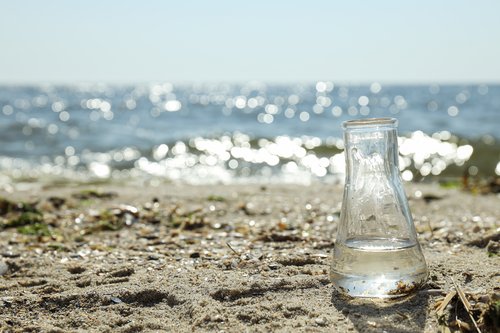
3 min read
The Six Chemical Classes Series
WLLW delves into how to recognize and manage harmful chemicals in domestic products, to create informed, health-conscious homes.

2 min read
We take a closer look at PFAS, uncovering their persistent presence in our homes, guiding you through the health and environmental impacts and the protective measures you can take.
In the realm of modern chemistry, a group of man-made compounds known as Per- and Polyfluoroalkyl Substances (PFAS) has emerged, leaving a problematic mark on our lives. These substances, often referred to as ‘forever chemicals’ due to their remarkable persistence and resilience in the environment, have found their way into an array of everyday products, from the non-stick coating on cookware to carpets, cosmetics and clothes. Their ability to repel water and grease has made them indispensable in various industries, and seemingly ubiquitous in our modern homes. So, what is essential for us to understand about PFAS and just how damaging they can be to humans and the natural world? The below guide offers the most up-to-date ‘need to know’.
Studies indicate that there are a number of ways to be exposed to PFAS, often without our knowledge. The most common routes include:
PFAS can be tenacious environmental troublemakers too. They infiltrate water sources above and below ground. This contamination, with its far-reaching tendrils, not only disrupts ecosystems but also infiltrates the tissues of wildlife, magnifying its impact on the food chain. PFAS's stubborn nature doesn't spare the soil either, affecting plant life. These chemicals take to the air, traversing the globe, and in their journey they find their way into human diets and respiratory pathways. Studies suggest adverse effects on wildlife and potential repercussions for human health.
While the pervasiveness of PFAS in our daily lives poses challenges, there are steps we can take to minimise our exposure and protect our health. In and around our home, WLLW suggests that you consider the following alternatives:
Tackling the PFAS problem is a team sport and the government plays a huge role in the game. The US government has implemented regulatory measures, primarily through the Environmental Protection Agency (EPA). The PFAS Action Plan, introduced in 2019, outlines a comprehensive strategy involving monitoring, research and regulatory initiatives to address PFAS contamination. The EPA, as a result, has developed a commitment roadmap, and taken steps to establish drinking water health advisories for two PFAS chemicals (PFOA and PFOS), indicating that they be designated as hazardous substances. Concurrently, Congress has actively proposed legislation to regulate PFAS, covering aspects such as drinking water standards and environmental clean-up.
These are all promising signs, but staying informed about ongoing developments is crucial as efforts to regulate PFAS are dynamic. For the latest information, checking the EPA website is recommended.

3 min read
WLLW delves into how to recognize and manage harmful chemicals in domestic products, to create informed, health-conscious homes.

2 min read
A Primer for Healthy Homes and Interiors. Who is gatekeeping wellness and sustainable design? WLLW looks at green certifications in brief.